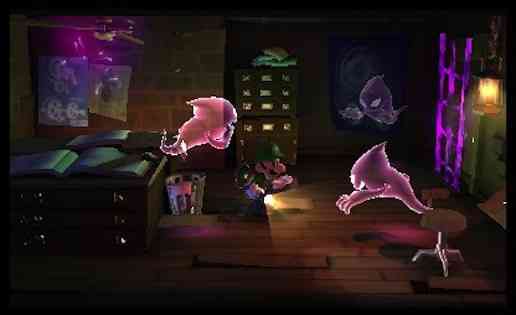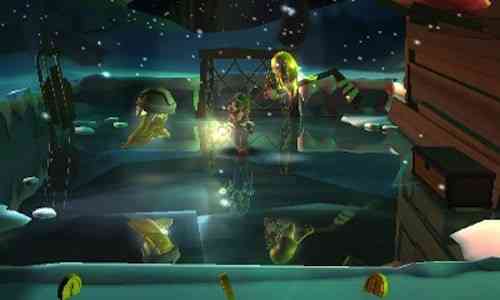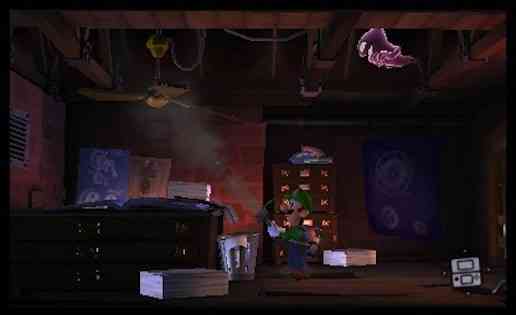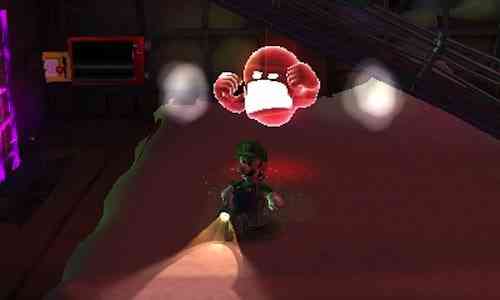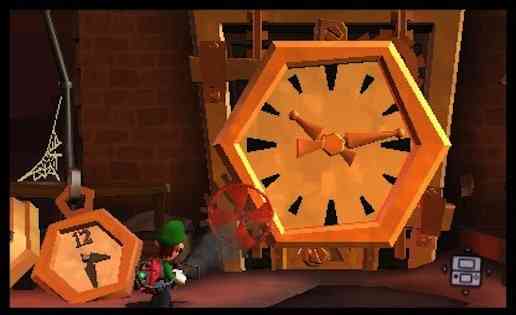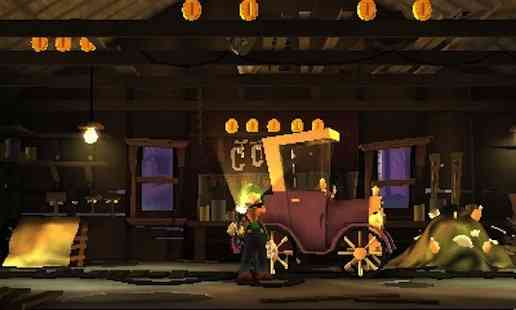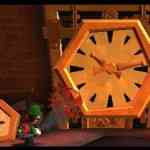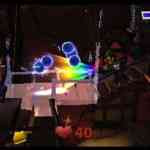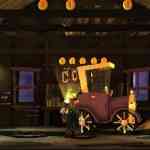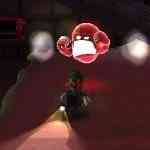This past week we were lucky enough to head down to Vancouver, B.C., Canada and visit with Next Level Games, who are the developers for Luigi’s Mansion: Dark Moon on the 3DS. It was a casual meeting and I was lucky enough to sit with a few members of the development including:
- Jonathan Yao – Character Artist
- Barret Chapman – Presentation Director
- Ken Yeeloy – Producer
- Chad York – Audio Director
- Rob Davidson – Lead Boss Designer
During our discussion I fired a number of questions that were answered by various members of the team. As the interview started, which I was recording, team members identified themselves when answering; however, as the interview progressed the team members were very excited to talk about their game and we all just forgot about identifying when speaking. So for continuity sake, I will note as best as possible who answered each question, but be forewarned that there were times when two or three people would want to comment on the question at hand and I had to go back on forth on the recording to figure out who was who. So without further ado, here is what transpired.
How did the collaboration between Next Level Games and Nintendo for the sequel to the 2001 Luigi’s Mansion even begin?
Ken: We were at the end of an experimental project with them and we were in a meeting to discuss said experimental project and they told us that there was not enough time to do the experimental project and they offered us a chance to develop the sequel to Luigi’s Mansion. After about 30 seconds of “stunned silence” we were like “….ok….” and we needed time to digest it. So in a nutshell, they were like “how would you like to do this” and we were like “sure”, and that is how it all started.
We have played the game in early form at E3 and PAX Prime. The game is coming from a traditional console to the 3DS, which is quite a unique handheld. Were there any control challenges given the lack of dual analog sticks? As well, was there anything you had to cut out or were there any specific features that you added due to the uniqueness of the 3DS’s abilities (e.g. gyroscope, accelerometer).
Rob: Having lost the second analog stick we designed the game with the fact that we only had the one analog stick (circle pad) on the 3DS. The game mechanics have been tailored for the 3DS. Given the control is tailored for the 3DS it takes advantage of the 3DS features for sure, like the tilt (gyroscope), which is something we could not do on the original GameCube.
In regards to 3D, this was never an issue with the original game, now it is. Did you try to take advantage of this new feature? It seems to be a game that could take advantage of the 3D. Thoughts?
Barret: Absolutely. The original Luigi’s Mansion was supposed to take advantage of 3D but it was not made in time (e.g. it was pre-3D days). Dark Moon was designed from the ground up to take advantage of the 3D. Every single aspect from early design. It had to be designed with the “shoebox diorama” as it is perfect for viewing 3D as you more or less have a fixed camera and your eyes are allowed to adjust and become comfortable. We are not dealing with a lot of erratic movement and it is a very beautiful 3D experience. I think every aspect of design we were aware or it and were always conscious of crafting the best stereo image that we could.
In terms of the art, how true to the original did you stay, but yet how far did you advance? Obviously you have technology that has advanced, so how will the purists who played the original view this game and will it remind them of the original, but on the other hand what will make people go “wow, look at that, it looks great”.
Jonathan: We used the old game as a basis, but technology has changed so much we started to be more ambitious on what we wanted to add. We took another take on the art style and it is quite unique. It takes advantage of what the 3DS is good at, which is taking advantage of our lighting system. The 3DS is quite better at doing some certain things then the GameCube was, so you’ll notice some of the lighting and polygons are more vibrant then they were in the original. Those are things that “we ran with” to increase the presentation.
Working on the 3DS as opposed to consoles, what was the main difference? While sitting in the lobby waiting to come in, I noted, along with your receptionist, that out of all the games you’ve made that are on the wall in the waiting area there are no 3DS games, and no portable games period. How was it working on the 3DS as a whole and how does it feel to be launching your first 3DS game?
Chad: One of the cool things of having a handheld is you know what your access system is going to be like. Compared to having a TV and a console and maybe speakers or no speakers, especially from my perspective, knowing how the game is going to be represented is huge. In terms of colour contrast and what not, having control of that kind of stuff is huge, as you don’t know what to expect from peoples televisions and home systems. For me it is a big advantage of knowing how the system is going to play and how it will look.
Ken: One of the other things is that with a lot of the coders I talked with during development of the project, the challenge for them is squeezing every ounce out of what you are given. So give them a PS3, they will do what they can with that, give them a 3DS, they will do what they can with that, give them a Wii, they will do what they can with that, the challenge for them is looking at what box are they are given and what can they do with that box. They look at the difference between “this and that” and what they can do.
How would you explain the art in Luigi’s Mansion: Dark Moon if you could give it a definition?
Jonathan: We wanted to work within the limitations, but also use them to our advantage. You’ll notice that a lot of the environments are like very chunky and angled, but they work in the style we want, which we want everything a little bit skewed and creepy, while at the same time its beautiful as it takes advantage of the shadows as you get hard edges and soft edges on the organic objects. For example, you shine a light on a spider and they cast a nice silhouette on the skewed walls and all of that works well together.
Barret: I think its some smart art direction choices early on knowing that we were working on a handheld and going with a simpler texture style and going with bigger bolder shapes that are easier to read. It is not muddied with busy textures or trying to look like one thing or another, it’s just a nice clean style that makes Luigi kind of “pop and sing” and going with glow ghosts is good.
I have noticed an improvement in sound since the 3DS was launched. The speakers sound good. Are there any tricks that you have used? Have you found that you put more resources into the sound then you had originally imagined?
Chad: The big thing for us is that we don’t have discs that are spinning as the previous systems that we worked on you were always dealing with contention of pulling a lot of assets at the same time streaming audio off the disc, and being on cartridge this time this is not an issue. We also had a great tech team under the hood who fought a lot of battles for us and made things a lot easier. It is harder to compare for me, as I have not worked on other handheld systems, but yeah, we definitely enjoyed working on it.
Barret: It’s a game that we recommend wearing headphones. You have to wear them to REALLY enjoy and take advantage of the immersion (sound) and the look of the game combined.
Something you touched on earlier was that Nintendo asked you to do the next Luigi game and you had to step back and take that request in; of course you didn’t say no. Next Level Games have developed a few Nintendo games where you’ve used “franchise” characters, and Nintendo is protective of them. How does it feel to be working on yet another franchise character game?
Ken: It’s awesome. We love it. We kind of earned our stripes with Nintendo. There is a reason their characters maintain consistency over the past 20-25 years because they hold true to rules around them. Some would say that is restrictive, but I would say that adds a challenge to these guys (the development team as a whole) and at the same time in regards to the games that we put out, the consumers have noticed the difference in the animations we put in our games as opposed to others that came out of Japan. We are afforded a certain amount of flexibility and creativity to add to our games. We can look at our games and see where we pushed for additions. We did that for Punch Out and we did that for Mario Strikers Charged. We pushed some of the characters in the latter game outside their regular personas and people noticed.
Chad: It’s a privilege to be part of any major franchise or IP that has existed for 30 years, so we look at it like there are constraints but it is a privilege to work with those characters. You could work in obscurity with characters that are brand new, and sure, you’ll have ultimate freedom, but you should have constraints to make that character who they are and we are lucky to work with Luigi and who he is.
Did you feel a bit of added stress knowing that Nintendo has made 2013 the ‘Year of Luigi’? Did you guys see that coming or was it a surprise?
Ken: We learned this when the announcement came out. We think that this is great this came out and were glad we were not made aware of it. Nintendo probably knew of this thought (Year or Luigi) before, but to me I think it is great. I would like to think that they looked at our game and realized part way through development as they were following along that “this is it guys, we have to put this (Luigi’s Mansion: Dark Moon) at the front and make this big” as they believed in the game like we do.
What has been the relationship with Nintendo? You said that you are allowed freedom but have to follow rules. Are you in constant contact with Nintendo in Japan (NCL)?
Ken: In working with Nintendo they might have well as been right beside us. The only difference was a logistic thing. The advantage we have is the end of our day is the start of their day so we compile our questions that we have from the day, fire them over to NCL, they look, evaluate it, provide their responses, and when we start our next day we have the answers we needed. Even though they are 10,000 miles away, we may lose some time, but we can get our answers the next day. Logistically, that is the challenge of that.
Translation is another challenge we have; making sure the idea is being translated properly, through a translator.
A lot of Nintendo games have been developed in Japan, released first in Japan, and then brought to North American Shores. They have most likely kept N. American shores in their thoughts, but it was not the target market per se. Luigi’s Mansion: Dark Moon is being developed in North America, Vancouver to be exact, which I am proud to say it is being that I am Canadian. Have they always sat down with you in regards to the issues of translation?
Ken: The group that we worked with (for translation) was a different group that we worked with during development of Punch Out and Mario Strikers. Just like anyone else you have to get to know them and you cannot blanket them under the same umbrella as everyone else, as “Hey, they work for Nintendo, they will always be this way”. You have to learn it all over again as they are a new group of guys.
Barret: In terms of the actual product working over seas in Japan, they come to us because they are looking for our sensibilities and what we bring to the table as a North American developer and they’re constantly sort of checking against certain things that “well this translation may not work well in Japan, so let’s change this”. There is always that back and forth so that it can play well for both audiences. So it was a constant collaboration.
Does the need to take into account different audiences (North American vs. Japanese) affect sound, especially in terms of music. Is everything on par with one another or will the Japanese Audience hear or see things that we won’t see here?
Chad: The versions are identical as we have worldwide Internet play so to allow for that we have to have the same executables for that to happen. But that said, artistic sensibility, just like on the design side or art side, we collaborated with Totaka-san who worked on original game and we sent our ideas back and forth and he would send his ideas back. We would say “Hey, we are thinking of going in one of these three directions” and he would point us in a direction. A couple of times Mr. Miyamoto was over and he would play the game and look at our vision where we wanted to take some of the music, and he would make his comments and say “lets take it this way”, and next time he would visit he would give us his next revision. Like any collaboration it was back and forth.
Multiplayer…what were the challenges and thoughts on how you came up with the ideas? Was it widely accepted or something that was ‘tough to sell’?
Rob: It was definitely new to the franchise as the first game did not have multiplayer and it adds longevity to the game. The idea to have four players at the same time trying to suck up the ghosts at the same time brought a new dimension different to the single player experience. Different objectives when having four players interacting with each other creates a new experience and during the course of project we kept fine tuning it. People had good times playing it.
Barret: I imagine we haven’t done a lot of mulitiplayer gameplay online but there came a point where features of the single player game made it into multiplayer and vice-a-versa so they started to cross pollenate and that said we knew we were on the right track.
Ken: We knew it had to happen. We always knew from the get-go as we had talked about it. We may not have actioned anything early on, but we always knew that online had to be a part of the game.
Rob: There must be a reason to play, for example, if people are completionists, and there must be a reason for people to come and play multiplayer, and there is here.
Were there things you had to cut out due to time or technical reasons? You don’t have to say what, but are there things you are thinking about if you are able to do a “Luigi 3”?
Barret: There are probably a closet full of ideas that didn’t find a place in this one or that we just didn’t have the time to do. Even before I started on the project, the team had gone through dozens and dozens [of ideas], and that is the way that Nintendo works and it works well with the way we work. It’s all just about trying stuff out and moving on to finding that idea that clicks.
Chad: We normally develop the characters too. Initially you think of the scope, like how am I going to come up with enough to fill ‘x’ amount of hours of a game to play. We come up with a plan, and then you reach a tipping point where you know you have too many ideas. The biggest part I love is the personality and the comedy that the ghosts and the characters have developed and once you fall in love with these personalities I can make six games with these characters. The characters we have developed you can see the potential that they all have, that is the tough part is “where do you cut yourself off”.
Ken: Nintendo will give you the time. They will explore stuff and they never throw anything away. We have a closet full of things that could potentially make it, but they will give you the time, so it is really hard to say that we didn’t have the time for things.
How long was Luigi’s Mansion: Dark Moon in development for?
Ken: Three years and four months….we had time and there is still a closet full of ideas. You have to pick which ones to use.
What do you want people who pick up and play this game to experience? Can you think of it in a word or sentence? (everyone responded to this one so I summed up the thoughts communicated to me)
…enjoy exploring
…there is so much to find and uncover in this game
…enjoy the surprise and delight.
…everything is built around “surprise and delight”, the whole chasm of the mansion is unexpected and surprising things will happen.
…you will get “surprise and delight” through the whole game
…very few games have feeling of delight, it’s just fun to do the things in the next room and pull on whatever the lever does.
…everything is tailored for the game experience.
…we hope that there is a lot of laughs too.
We would like to thank Nintendo of Canada and Next Level Games for taking the time to sit down with us to talk about Luigi’s Mansion: Dark Moon. It was clear from my time with the everyone who was in the room that they truly are proud of what they have crafted and that they have put a lot of time and work into this game. You can look for our review a few days prior to the games launch. The game hits store shelves on March 24, 2013.
